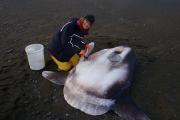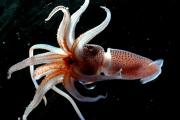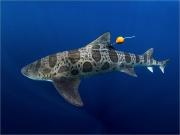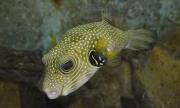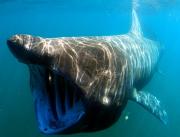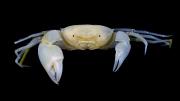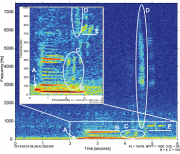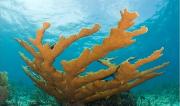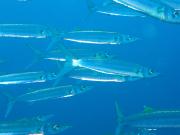New discoveries in the ocean never end, but sometimes even the ocean’s largest animals can evade scientists. It takes perseverance, a bit of luck and sometimes help from everyday people to find elusive new creatures. PhD student Marianne Nyegaard and a team of researchers from Murdoch University in Australia spent four years searching for a new species of sunfish, or mola, the largest bony fish in the world.
Articles
The Marine Science Institute's monthly column, Science and the SeaTM, is an informative and entertaining article that explains many interesting features of the marine environment and the creatures that live there. Science and the SeaTM articles appear monthly in one of Texas' most widely read fishing magazines, Texas Saltwater Fishing, the Port Aransas South Jetty newspaper, the Flour Bluff News, and the Island Moon newspaper. Our article archive is available also on our website.
They’re tiny and they’re brainless, but the box jellyfish of Australia, known to science as Carukia barnesi, packs a deadly punch — and its victims aren’t random. Researchers already knew this extremely venomous predator was one of a half dozen jellyfish that cause Irukandji syndrome, named for an aboriginal tribe that lived in the area where most of the stings occur. Symptoms in humans include lower back pain, severe muscle cramps, vomiting, anxiety and occasional cardiac problems that can lead to death.
Living in near-total darkness requires some creative adaptations both to find food and avoid becoming food. For the red-colored strawberry squid, also called the cock-eyed squid, that creativity involves hundreds of tiny “strawberry seed” dots covering its body and a bizarrely mismatched pair of eyes. The “seeds” are actually tiny organs called photophores that emit light, or bioluminescence. The football-sized squid can use a camouflaging strategy of counter-illumination to avoid being seen from below.
It’s said that sharks can smell a drop of blood in water a mile away. Depending on the shark species and its prey, that may be an exaggeration, but these predators undoubtedly have an incredible sense of smell. Some species can detect the scent of prey at one part per 10 billion — equivalent to a single drop in an Olympic size swimming pool. But sharks’ noses may do more than find food. For leopard sharks, at least, their sense of smell may also help them find their way.
Dads always build the best sand castles — at least when it comes to the white-spotted pufferfish. Males of this recently discovered species build exquisite, circular sand nests on the ocean floor, not only for their offspring, but also for the many female mates they hope to attract. The more tempting his large nest is, the more females he can attract for spawning. And he’s more than willing to take responsibility for his playboy lifestyle by taking over parenting duties as well.
Although they frequently swim with their massive mouths wide open to feed, basking sharks don’t look like the Jaws-type predator most people think of when they imagine a shark. The biggest of these 4-ton fish are just a few feet shorter than a typical school bus. Their gaping mouths reveal their gills and filter-feeding structures, which together resemble the inside of a rib cage. Basking sharks are the second largest shark in the world and just like their bigger cousins, whale sharks, they are filter feeders. Their hundreds of tiny teeth are too small to do much damage.
The naming of a new genus and species of crab goes to show that the magic of J.K. Rowling can inspire more than just children, and sometimes an “outsider” has more to contribute than it rst appears. Just as Harry Potter seemed an unlikely boy to become a great wizard, Harry Conley was perhaps an unlikely explorer to discover several new and rare crabs. One of those crabs now has a name honoring both Conley and two important characters in Rowling’s stories. That name is Harryplex severus.
They went looking for typical calls of blue, minke, n, humpback and other whales who live in the area of Mariana Trench Marine National Monument, a nearly 100,000-mile region east of the Philippines near Guam. The team of acoustics scientists from Oregon State University and Cornell University “ ew” an underwater robot 1,000 meters deep to record sounds in the area. But they stumbled upon a mysterious sound they had never heard — or seen — before.
Bowhead whales and Greenland sharks can live up to two centuries, and century-old Galapagos giant tortoises are just young adults. But none of these creatures can hold a candle to corals and sponges. Although both corals and sponges look somewhat like plants, they are two very different kinds of animals that can grow to be thousands of years old.

